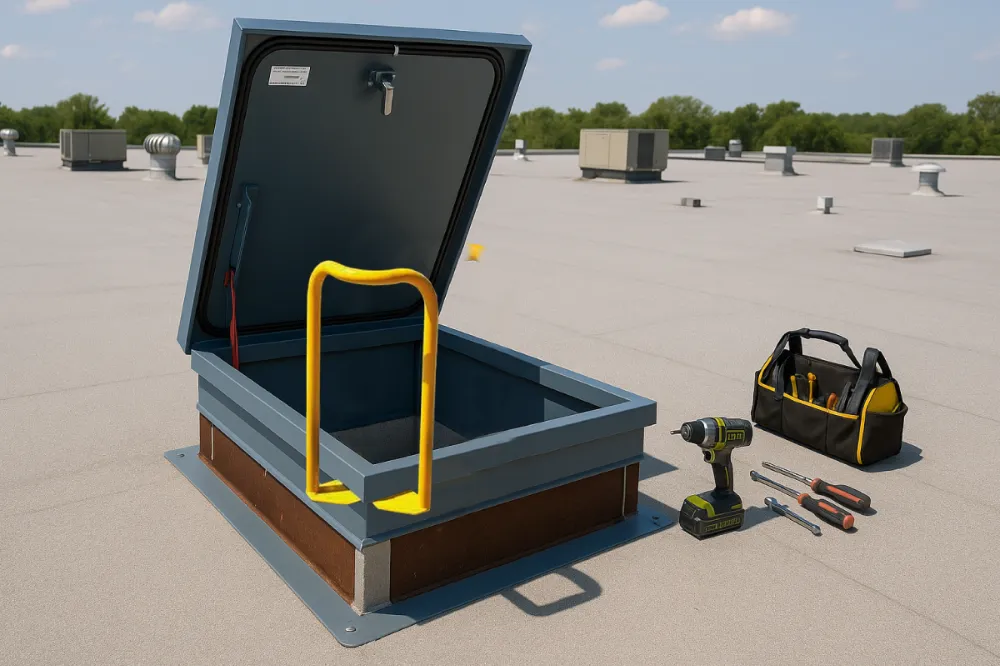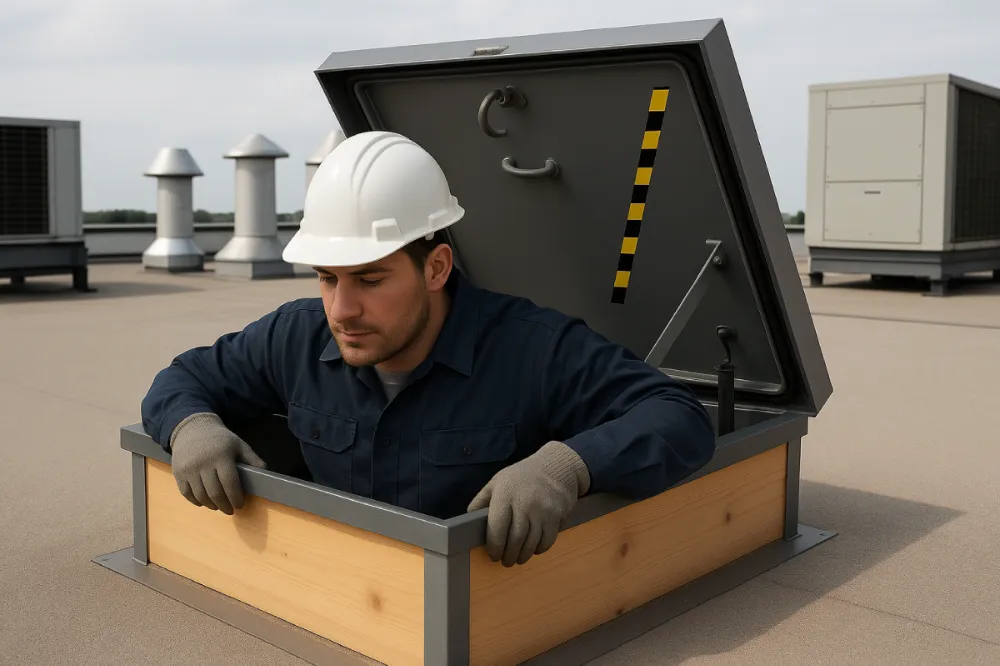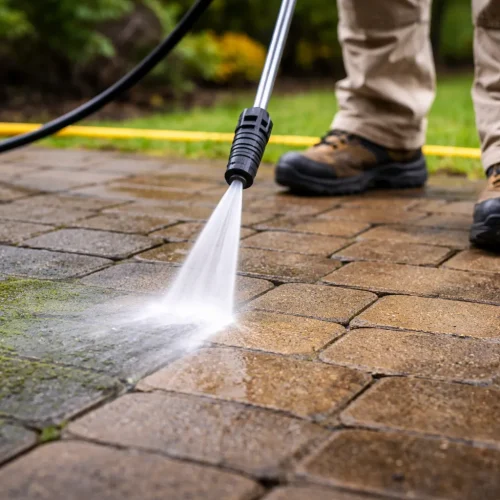
What would happen if a rooftop equipment suddenly failed during a heavy rainstorm? If it’s something critical like an exposed conduit or a leaking HVAC system, technicians must act fast to avoid further damage. However, every second spent climbing an external ladder or setting up scaffolding is a second lost.
A quick and safe way to reach the rooftop is important, and a roof access hatch gives teams the necessary advantage. This article explores how roof access hatches enhance worker safety and speed during urgent maintenance.
How a Roof Access Hatch Improves Safety
When emergencies happen, worker safety is always the top priority. A roof access hatch is a safety-focused solution designed to protect maintenance personnel from the hazards of working at height. From reducing the risk of falls to ensuring regulatory compliance, here’s how a roof hatch keeps crews safer during urgent repairs:
1. Reduces the Risk of Falls
Falls remain one of the top causes of workplace injuries, especially when accessing rooftops during bad weather. External ladders and scaffolding expose workers to slippery surfaces, strong winds, and limited stability.
A roof hatch removes these hazards by letting maintenance teams enter from inside the building, typically through a fixed ladder or stair system.
Safety features like anti-slip treads, grab bars, and the ability to attach guardrails provide additional fall protection. These design features help workers maintain their grip and step safely onto the roof.
2. Provides a Secure and Controlled Entry Point
Anyone can access and climb up the scaffolding or ladders outside a building. This uncontrolled access point adds headaches and responsibilities to building owners and construction workers.
Roof access hatches solve this problem by offering a controlled, lockable entry that restricts rooftop access to authorized personnel. This prevents unsafe or unauthorized entry while protecting vulnerable rooftop equipment from potential tampering or damage.
3. Prevents Accidental Closure and Offers Stability
Heavy access doors and panels can slam shut without warning in strong gusts, which is dangerous for anyone going through.
Roof hatches have hold-open arms or mechanical supports that keep the lid in place until the maintenance crew chooses to close it. The hatch frame is a secure, level surface that individuals may step on or off the roof, lowering the chance of slipping or losing their balance when entering or escaping.
4. Offers Emergency Egress
Getting off the roof might be the safest option in certain emergencies, such as a fire, chemical spill, or flooding. If other exits are blocked, a roof hatch might be a second way out for occupants to quickly and safely leave a building. This flexibility is important in high-risk situations.
5. Ensures Compliance With Safety Regulations
Regulatory bodies like OSHA require safe and approved rooftop access points for maintenance and inspection activities.
Installing a compliant roof hatch keeps construction teams and building owners aligned with these standards and reduces liability risks. Meeting code requirements ensures the structure is equipped for safe and efficient emergency responses.

How a Roof Access Hatch Improves Speed
Delays can mean costly damage, prolonged downtime, and increased safety risks in emergency maintenance. Roof access hatches are designed to minimize these delays, allowing crews to respond rapidly and efficiently. Here’s how they significantly reduce the time it takes to reach and repair rooftop equipment:
1. Eliminates Setup Time
Unlike ladders or scaffolding, which require assembly, positioning, and safety checks, a roof hatch is ready for use at any moment. Workers can climb to the roof using an interior fixed ladder or stairs, cutting response times dramatically. This instant accessibility can make the difference between a quick fix and a costly repair.
2. Provides a Direct and Clear Path
In large or complex buildings, navigating hallways, service areas, and stairwells to find an exterior ladder can waste valuable minutes. A strategically placed roof hatch offers a direct route from key maintenance areas to the rooftop, eliminating unnecessary detours and reducing the time spent simply getting to the problem.
3. Simplifies Material and Equipment Transport
Some rooftop repairs require more than just a technician with a toolbox. A roof hatch typically features a wider opening than exterior ladders, making it easier to pass through bulky tools, repair materials, or replacement parts. This prevents multiple trips and speeds up repair, especially for equipment-heavy jobs.
4. Allows for Quicker Response in Various Conditions
Bad weather often increases the urgency of rooftop repairs, but it can also hinder access. Roof hatches provide all-weather usability, letting crews avoid slippery, ice-covered, or wind-battered exterior ladders. Whether it’s heavy rain, snow, or strong gusts, maintenance teams can reach rooftop equipment safely and quickly without delay.
To Sum It Up
A roof access hatch is a smart investment in safety and efficiency. In emergencies, it ensures workers can reach rooftop equipment quickly without compromising their well-being. From reducing fall risks to eliminating setup delays, it’s important to minimize downtime and prevent costly damage.
As building designs become more complex and rooftop systems more essential, installing a well-designed, compliant roof access hatch is a proactive step toward protecting a property and its occupants.












